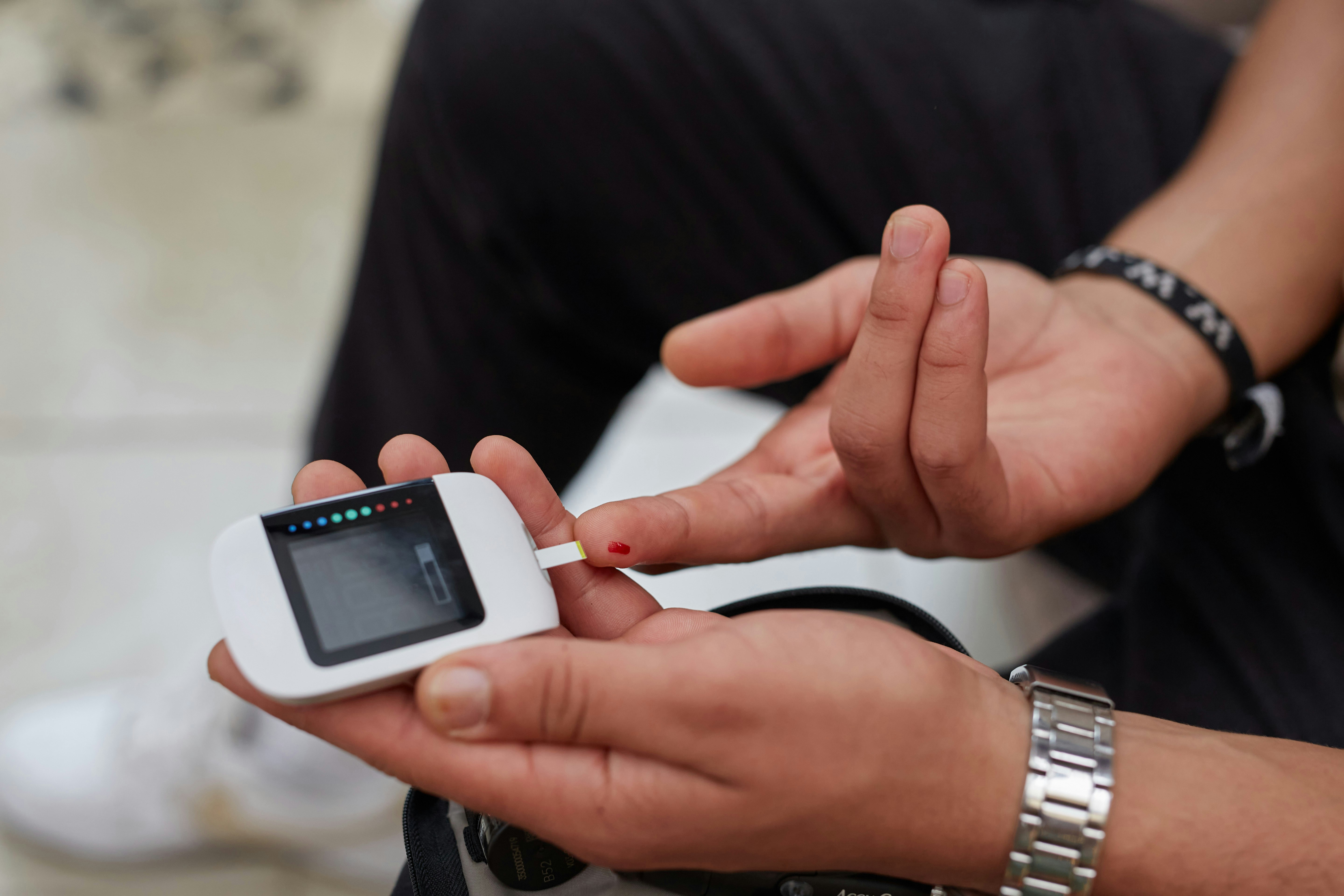
Quick Methods to Lower Blood Sugar Naturally
Understanding Blood Sugar Levels
Blood sugar levels, also known as blood glucose levels, refer to the amount of glucose present in the bloodstream. Glucose serves as a vital source of energy for the body's cells, and maintaining stable blood sugar levels is crucial for overall health. These levels can fluctuate throughout the day based on various factors, including diet, physical activity, and the body's hormonal responses. It's essential to recognize that both high and low blood sugar levels can pose significant health risks.









High blood sugar, or hyperglycemia, occurs when there is too much glucose in the bloodstream, often due to insufficient insulin production or the body's inability to use insulin effectively. Common symptoms of elevated blood sugar include increased thirst, frequent urination, fatigue, and blurred vision. If left unchecked, prolonged high blood sugar can lead to serious long-term health complications, such as cardiovascular disease, kidney damage, and nerve issues, further emphasizing the importance of monitoring blood sugar levels.
Conversely, low blood sugar, or hypoglycemia, can also be detrimental, leading to symptoms such as dizziness, confusion, and in severe cases, loss of consciousness. Thus, maintaining balanced blood sugar levels is paramount for physical well-being, as significant fluctuations can disrupt metabolic processes and lead to serious health concerns.
For individuals seeking to learn how to lower blood sugar fast, understanding the underlying factors influencing these levels is the first critical step. Natural methods, such as maintaining a balanced diet rich in whole grains, fruits, and vegetables can play an instrumental role in managing blood sugar levels. Regular physical activity can also aid in enhancing insulin sensitivity, thereby assisting in keeping blood sugar levels within a healthy range. The positive impacts of such lifestyle modifications cannot be understated, especially for those at risk of diabetes or other metabolic disorders.
Effective Lifestyle Changes
Implementing impactful lifestyle changes is one of the most effective approaches for individuals seeking to understand how to lower blood sugar fast. Through regular physical activity, proper sleep hygiene, and stress management, individuals can make significant strides in achieving better blood sugar control.
Firstly, engaging in regular physical activity is essential. It helps improve insulin sensitivity, allowing the body to use glucose more effectively. Aim for at least 150 minutes of moderate-intensity exercise each week, such as brisk walking, cycling, or swimming. Incorporating strength training exercises two days a week can also enhance your overall glucose metabolism. For those who are new to exercising, beginning with short 10-15 minute sessions and gradually increasing duration can be a manageable way to establish a routine.
Secondly, proper sleep hygiene plays a crucial role in blood sugar regulation. It has been established that sleep deprivation can negatively affect insulin sensitivity and glucose levels. Strive for 7-8 hours of quality sleep each night. Establishing a consistent sleep schedule, avoiding caffeine in the evening, and creating a restful environment can foster better sleep hygiene. Simple adjustments, such as dimming lights before bedtime and engaging in calming activities, can lead to improved sleep quality and subsequently, better blood sugar management.
Lastly, managing stress is pivotal for those looking to lower blood sugar fast. Elevated stress levels can prompt the release of hormones like cortisol, which can raise blood sugar levels. Techniques such as mindfulness meditation, deep-breathing exercises, and yoga can significantly reduce stress levels. Finding hobbies or activities that bring joy and relaxation can also contribute positively to emotional well-being, indirectly supporting improved glycemic control.
Incorporating these lifestyle changes into daily routines can lead to profound improvements in blood sugar management and overall health. By remaining consistent and committed to these changes, individuals can effectively tackle the challenges posed by elevated blood sugar levels.
Choosing the Right Foods
Maintaining stable blood sugar levels is crucial for overall health, particularly for individuals with diabetes or those at risk of developing it. An effective way to achieve this is through careful selection of food items. Incorporating whole grains, lean proteins, healthy fats, and a variety of vegetables into your diet can significantly contribute to lowering blood sugar levels.
Whole grains such as quinoa, brown rice, and oats are rich in fiber, which helps regulate digestion and slow the absorption of glucose into the bloodstream. This can be particularly beneficial when determining how to lower blood sugar fast. Including these grains can help maintain energy levels while minimizing spikes in blood sugar.
Lean proteins, like poultry, fish, legumes, and tofu, also play a vital role. Proteins have a minimal impact on blood sugar levels compared to carbohydrates, making them an ideal choice for achieving stable glucose levels. They also promote satiety, which can prevent overeating and ultimately help in managing weight, a contributing factor to blood sugar control.
Healthy fats, found in avocados, nuts, seeds, and olive oil, are essential for a balanced diet. They aid in the absorption of essential vitamins and minerals and provide a source of sustained energy without causing sharp rises in blood sugar. Moreover, these fats can enhance the flavor and satisfaction of meals.
Vegetables, especially non-starchy varieties like leafy greens, broccoli, and bell peppers, should form a significant part of any meal. These foods are low in calories and carbohydrates but high in essential nutrients, making them perfect for those looking to lower blood sugar levels naturally.
Conversely, it is vital to avoid processed foods, sugary snacks, and refined carbohydrates, as they can lead to rapid spikes in blood sugar. Implementing effective meal planning strategies can further aid in achieving a balanced diet aimed at stabilizing blood sugar levels. This ensures that you remain mindful of your food choices, ultimately empowering your efforts in learning how to lower blood sugar fast.
Hydration and Blood Sugar Control
Maintaining proper hydration is a crucial aspect of managing blood sugar levels effectively. The relationship between water intake and insulin sensitivity is vital, as adequate hydration supports various physiological functions that help regulate glucose metabolism. Studies suggest that even mild dehydration can impair insulin action, making it more challenging to maintain optimal blood sugar levels. Therefore, if you are wondering how to lower blood sugar fast, focusing on hydration should be a top priority.
To ensure sufficient hydration, it is recommended to drink water consistently throughout the day. The general guideline is to aim for at least eight 8-ounce glasses of water daily, although individual needs may vary based on factors such as activity level, climate, and overall health. It is essential to incorporate water into your daily routine rather than waiting until you feel thirsty, as thirst can be an indicator that dehydration has already set in.
While water is the best choice for hydration, certain beverages can also be beneficial. Herbal teas, clear broths, and diluted fruit juices offer flavorful alternatives that can contribute to total fluid intake. However, it is crucial to steer clear of sugary drinks, sodas, and high-calorie beverages, as these can lead to sharp spikes in blood sugar. Even fruit juices, although they contain vitamins, can pose a risk if consumed in excess due to their sugar content.
Incorporating hydrating foods into your diet is another effective strategy. Fruits and vegetables with high water content, such as cucumbers, watermelon, and oranges, can enhance hydration while providing essential nutrients. Monitoring your hydration levels and being conscious of your beverage choices can significantly assist in learning how to lower blood sugar fast and improve overall health.
Herbal Remedies and Supplements
In recent years, the interest in natural ways of managing health concerns, particularly regarding blood sugar levels, has significantly increased. For those seeking to understand how to lower blood sugar fast, various herbal remedies and supplements have shown promise. These natural ingredients can complement a balanced diet and lifestyle while potentially enhancing insulin sensitivity and glucose metabolism.
One of the most researched herbs is cinnamon. Studies suggest that cinnamon may help improve insulin sensitivity and lower blood sugar levels. A common recommendation is to consume 1-2 teaspoons of ground cinnamon daily, either incorporated into meals or taken in supplement form. However, it is essential to ensure that the cinnamon used is Ceylon cinnamon, which is less likely to contain harmful coumarin levels found in Cassia cinnamon.
Bitter melon is another herbal option frequently discussed in the context of blood glucose control. This fruit, which can be consumed as a juice or in capsule form, contains compounds that may mimic insulin effects and aid in regulating blood sugar. A typical dosage is ½-1 cup of bitter melon juice or a standardized supplement, but consulting a healthcare professional is advisable before starting, particularly for those on medication.
Furthermore, the herb fenugreek has gained attention for its high soluble fiber content, which can help lower blood sugar levels. Taking 5-10 grams of fenugreek seeds daily can support blood glucose management, but individuals should monitor their response to this supplement carefully. Finally, berberine, a compound found in several plants, has shown effectiveness in studies for improving glucose metabolism. A common supplement dosage ranges from 500 mg to 1500 mg daily, taken in divided doses.
It is crucial to approach these herbal remedies with caution. While they can be beneficial, it is important to consult healthcare providers before beginning any new supplement, especially if you have existing health conditions or are on medication, to ensure safe and effective integration into your regimen. Natural methods to lower blood sugar levels can be potent allies in maintaining overall health.
Understanding Glycemic Index
The glycemic index (GI) is a numerical scale that ranks carbohydrate-containing foods based on their effect on blood sugar levels. Specifically, it measures how quickly a particular food raises blood glucose after consumption. Foods are assigned a value from 0 to 100, with pure glucose given a value of 100. Low-GI foods are those that have a value of 55 or less, while foods with a GI of 70 or higher are considered high-GI. Understanding the glycemic index is crucial for individuals looking to manage their blood sugar levels effectively, particularly for those who seek methods on how to lower blood sugar fast.
When carbohydrates are consumed, they break down into glucose, leading to an increase in blood sugar levels. High-GI foods cause a rapid spike, followed by a quick drop in blood sugar, which can lead to cravings and increased hunger. In contrast, low-GI foods provide a more gradual and steady increase in blood sugar levels, helping to maintain glucose stability over time. This characteristic makes low-GI foods a valuable component of diets aimed at preventing blood sugar spikes.
Examples of low-GI foods include whole grains such as barley and quinoa, legumes like lentils and chickpeas, and certain fruits such as apples and berries. Incorporating these foods into your meals can be an effective strategy for those wondering how to lower blood sugar quickly and naturally. By opting for low-GI foods, individuals can control their blood sugar levels more efficiently, reducing the risk of complications associated with high blood sugar. Practicing mindful eating decisions based on the glycemic index can empower individuals to make healthier choices while managing their metabolic health.
Monitoring Your Blood Sugar Levels
Regularly monitoring blood sugar levels is crucial for individuals, particularly those managing diabetes or prediabetes. By understanding how to lower blood sugar fast, you are better equipped to respond appropriately to elevated levels. Tracking glucose levels provides valuable insights into how various factors, such as food intake, stress, and physical activity, influence your blood sugar.
There are several methods for monitoring blood sugar. The most common approach is using a glucometer, a portable device that measures blood glucose levels from a small blood sample. Many glucometers now come with features that allow for the easy logging of results, making it simpler to analyze trends over time. Continuous glucose monitors (CGMs) are also gaining popularity, providing real-time glucose readings through sensors placed under the skin. This technology allows for proactive management of blood sugar levels and offers an understanding of fluctuations throughout the day.
Keeping a log of your blood sugar readings is essential. Not only does this practice help in identifying patterns, but it also aids healthcare professionals in tailoring your management plan more effectively. A consistent record can reveal how diet, exercise, medications, and other lifestyle choices impact your blood sugar. When reviewing your log, pay attention to the times when you experience spikes or drops in blood sugar and correlate those events with meals or activities, as this knowledge will empower you to make informed decisions on how to lower blood sugar fast.
Interpreting blood sugar results requires familiarity with the target ranges for fasting and postprandial levels, as recommended by healthcare providers. Most health guidelines suggest that fasting blood sugar should ideally be between 70-100 mg/dL, while post-meal levels can vary. By understanding these benchmarks, individuals can take actionable steps when their readings fall outside the normal range, optimizing their overall health and safety.
When to Seek Professional Help
Monitoring blood sugar levels is crucial for individuals with diabetes or those experiencing symptoms of high blood sugar. While there are numerous methods to lower blood sugar fast, it is essential to recognize the points at which professional help is necessary. High blood sugar, or hyperglycemia, can lead to severe health complications if left unmanaged. Therefore, being alert to the signs that require immediate attention is key in effectively managing this condition.
Symptoms such as increased thirst, frequent urination, fatigue, blurred vision, and headaches are common indicators of elevated blood sugar levels. If these symptoms escalate, it may signify a critical situation that necessitates urgent care. Particularly, if the blood sugar reading exceeds 240 mg/dL, it is advisable to consult a healthcare professional promptly. Ignoring these warning signs can lead to diabetic ketoacidosis, a life-threatening condition that arises when the body starts breaking down fat at an abnormal rate.
In addition to recognizing urgent signs, seeking guidance from healthcare professionals can significantly aid in the management of blood sugar levels. Consulting with a nutritionist or a diabetes educator can provide personalized strategies that align with an individual's health goals and lifestyle. These experts can offer valuable insights into dietary modifications that can contribute to lowering blood sugar fast. Moreover, they can help develop a comprehensive care plan that includes physical activity and stress management techniques, which are vital for overall health.
Ultimately, understanding when to seek professional help is essential for effectively managing high blood sugar levels. By being vigilant about symptoms and consulting with qualified professionals, individuals can navigate their health challenges more effectively and lower blood sugar levels sustainably.
Success Stories and Motivation
Real-life success stories can serve as powerful motivators for those seeking to understand how to lower blood sugar fast. These narratives about individuals who have successfully managed their blood sugar levels naturally highlight not only the triumphs but also the strategies employed along their journeys. For instance, Sarah, a 32-year-old healthcare professional, faced the challenge of elevated blood sugar levels due to a sedentary lifestyle and poor eating habits. After learning about the importance of diet and exercise, she committed to incorporating more whole foods into her meals and engaged in regular physical activity. Within six months, Sarah reported a 30% reduction in her blood sugar levels, leading her to share her experience through blog posts and community forums, providing inspiration for many others.
Similarly, John, a retired teacher, used his background in science to research natural ways to manage his diabetes. He began experimenting with various foods and discovered that certain herbs, such as cinnamon and berberine, could be effective in supporting healthy blood sugar levels. By consistently integrating these foods into his diet, along with practicing mindfulness and stress-reduction techniques, he was able to lower his blood sugar without succumbing to medication. John’s proactive approach and disciplined routine showcase that informed decisions can pave the way for better health outcomes.
These stories exemplify how determination and informed lifestyle choices can significantly impact health. By sharing practical tips, such as meal planning, increasing fiber intake, and consistent exercise, these individuals empower others to take charge of their health and pursue their journeys towards lower blood sugar levels. Realizing that manageable changes can yield substantial results forms a cornerstone of motivation. Through these testimonials, readers are inspired to take their health into their own hands, emphasizing that it is indeed possible to lower blood sugar fast through dedicated efforts and natural methods.



